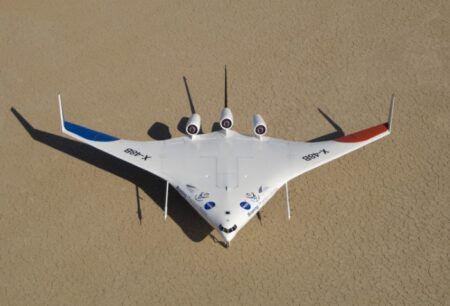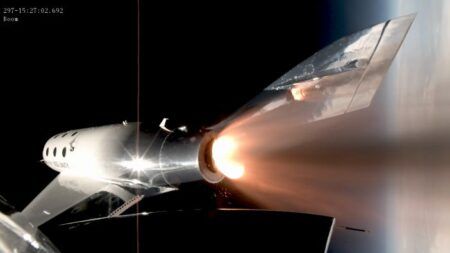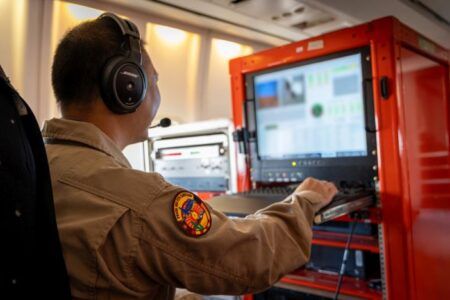Over the clear northern Catalan skies, 11 internationally renowned pilots battled it out at Europe’s first-ever international Formula 1 class air racing series – Air Race F1 – in Lleida, near Barcelona, Spain. Pilots from the USA, UK, France and Sweden revved up to showcase some of the world’s best air racing, in which French pilot Christian Guilie won the overall title on June 1, 2014.
It was not against a clock like in Red Bull Air Racing, or straightforward timed flights. The pilots flew a circuit against each other, vying for lead spot. Imagine F1 car racing, but 3D, and a lot faster.
As the roar of the hugely powerful aircraft has died down, and the champagne has been drunk, the event could mark a totally new era of air racing, which could bring back a golden age not seen for more than 50 years.
This latest air sport needs to be taken seriously. The Reno annual air race is huge, and hundreds of thousands attend, but it is a national sport within the USA. Air Race F1 is global. The results of the first race were ratified by three recognized international air associations from the USA, France and UK, respectively the International Formula 1 Air Racing Association, the Association des Pilotes d’Avions de Formules and the Formula Air Racing Association.
The aircraft and the pilots
Jay D Jones is president of J J Air Works, and happens to be one of the pilots. He came second out of the eight ‘Gold’ racers, showing an average speed of 239mph. He is adamant that the race brings back the golden age of air sport: “This race in Spain is back to the real air racing that was started in 1947 where eight competitors competed with each other at the same time around the pylons. The best combination of pilot and airplane will cross the finish line first.”
Aircraft are tested thoroughly and to the same criteria as motor racing: wing area no less than 66ft2, empty weight of no less than 500 lb, fuel capacity no less than 5 gallons, and the engine must be a Continental 0-200 with 100hp. Other criteria include height, wheel size, vision requirement and seat height.
On top of this, there are strict technical guidelines on any engine modification or detailing – just the same as for auto racing – such as sweep volumes, compression ratios and carburetor guidelines; and individual parts weights such as cranks, push rods, valves, pistons and connecting rods.
Jones says, “F1 racers are built to go fast, fly low and turn left. But F1 aircraft are also built with love by airplane enthusiasts and designers who think they can make a faster and a better design that can slip through the air better than their competitors.
“I have spent years trying to remove any gram of drag on the aircraft – everything from the wheel parts, intersection fairing, cowling shapes, fuselage, engine cooling and engine induction. Each part added to the airplane is tested over and over, and each variation is test flown to remove any drag, and tested for flutter, vibration and performance.”
Steve Temple is another air race pilot who took part in the demonstration race in Spain, and was unlucky not to complete the last laps because of technical problems. He agrees that the aircraft have to follow stringent guidelines, but that they do vary: “There are some purpose-built racers such as the Boyd GR-7 Panther and the French Arlety [moulded to the pilot’s body]. Most are sport flying machines, meaning you can fly them at the weekends from airport to airport and also do some minor aerobatics with them. The most widely accepted racing design is a Cassutt.”
The setup
The teams have many support crew and engineers on the ground. Temple explains, “Typically there is one dedicated pilot and a crew chief who functions as the aircraft mechanic. In order to facilitate safe starting, many of the teams have a dedicated starter as many of the aircraft must be hand-started or propped. There is usually one team member dedicated to assisting the pilot in and out of the airplane. So typically pilot, crew chief, starter, pilot assistant.”
Jones says that the responsibility of engine testing is entirely down to him, but he has the kit: “I have full telemetry recording equipment on board, designed by MGL Avionics, that monitors engine output, performance, EGT, CHT, rpm, oil pressure, oil temperature and manifold pressure; and all flight characteristics such as speed, altitude, g-load, and GPS tracking.”
Temple goes into more detail, but agrees that tests are the responsibility of the pilot in order to keep safe, and things are really fairly simple: “The aircraft are tested using standard home-built stress tests that typically have a load placed on the wing with sandbags to demonstrate the wing-loading capability.
“There is also the requirement of the airplane to demonstrate a 6g pull with a mobile g-meter attached in the cockpit. During the check ride, the pilots must do a full left and right roll, and a half left and right roll, demonstrating the upset recovery capability of the airplane and pilot. They must also conduct an engine-out landing and a simulated aborted take-off. Typically, a volumetric test is conducted using a liquid measuring device – typically a buret. Load it with Marvel Mystery Oil and test for volume at top dead center of the piston stroke to make sure the engine displacement is standard and there has been no stroking or boring of the cylinder. There is also a cam test conducted using a dial indicator to measure valve rise and fall. These measurements are then loaded into a program to make sure that the camshaft meets lobe measurement formula criteria.”
Flying the course
Inspections by the pilots, race organizers and ground experts are regular and thorough, but how do the pilots prepare? “You prepare for a race by trying to get as much formation flight time as you can. We say this is an uncooperative formation. There are different ways to fly the course. The high line keeps you out of the turbulent air that is created by the other airplanes. However, most pilots do not fly a high line – they prefer to get as low as possible to best judge the exact distance from the pylon. A constant altitude is the best way to fly the course as no energy is spent either climbing or diving. However, since the entire course is flown by line-of-sight, this is what the pilot finds most difficult and that is where the skill set is – flying at a constant level.”
Jones concurs, “Practice, practice and practice; flying in all racing conditions, from flat flying to sharp turns, from quick climbs to controlled descents. Acrobatic safety maneuvers are practiced and tested. “As athletes, we train by running, cycling and exercising. As pilots, we must keep both our bodies and minds in shape.”
Jones sums up: “I am very optimistic that this joint national event will rekindle the aviation spirit and bring the golden age of flying back to the public.” Air Race F1 will hold its first full annual World Series in 2015. Dates are being planned and venues arranged, with announcements to come later in the year. Anyone who has been to a Formula car race, will see and feel cars shoot past every few seconds, but did not really have a clue what is going on. I have a feeling this will be very different – and more thrilling.
The man behind it all
Jeff Zaltman, CEO, Air Race F1
How did Air Race F1 come to fruition?
Air Race F1 came about following my years of development of other forms of air racing and air sports events and media projects. I had long identified Formula 1 air racing as a format that could have high growth opportunities, and finally I found the right moment to run with it.
The sport has a lot of history, but has not had the benefit of proper promotion and development, so I decided about 18 months ago to use my 10 years of experience in this area to focus solely on Formula 1 air racing and to take it into the mainstream of the sporting world. So, Air Race F1 is the new international series dedicated to this sport, with a focus on media and commercialization and sustainability.
You used to be an aircraft technician. Did that influence the creation of Air Race F1?
My time in the US Navy as an avionics technician on carrier-based attack aircraft certainly contributed to my early inspiration to both fly and develop an aviation career. In particular it helps me to grasp and contend with the technical side of Formula 1 air racing – which is at least as demanding as any maintenance support environment that I saw in the military. I’m still not a very technically minded person, and I don’t have a tiny fraction of the knowledge that the Formula 1 air racing support crews have, but at least I can appreciate their expertise, dedication and importance; support is integral to the sport.
How does Air Race F1 differ from Red Bull Air Race, the Reno Air Races and the Rocket Racing League?
It is quite different from any other competition format out there. In the Red Bull Air Race, only one aircraft competes at a time against a clock; Formula 1 is eight aircraft competing directly against each other in a real race. The Rocket Racing League is a fascinating concept but never really took off, and the race would take place thousands of feet away from audiences. It is a sound platform for gaming but it doesn’t benefit from having any history or existing fan base. The Reno Air Races are the mecca of the sport and a grand event, but it takes place only once a year and is a US National Championships – not an international series like the Air Race F1. However, we do hope to have a good working collaboration with it in the near future.
How did you get into air racing?
As a basic private pilot, I met other pilots who do some amazing things, and I wondered, ‘Why don’t more people know about this stuff?!’ So I decided there might be an opportunity to introduce new audiences to air racing, and air sports in general, as the last frontier of sport yet untapped. I chose air racing as the most audience-friendly format, and off I went!
You have completed the first demonstration race series in Spain. How did it go?
I couldn’t be happier with the outcome! There were many hurdles and unforeseen obstacles, but they were quickly overcome by the wide support and motivation of all the people who contributed to the event, including pilots, engineers, racing associations, enthusiasts and even the authorities and governmental organizations. The biggest mark of its success is that everyone – from host city to competing pilots – want to come back for more next year.
How do the aircraft perform? Are they all different?
Formula 1 airplanes need to meet a certain defined set of criteria to qualify for the race. But pilots can take those criteria and ‘connect the dots’ however they wish. So although there is a standardized starting point for design and build, there is an impressive variation in design characteristics and use of technology. Each plane is truly different, yet compatible in sporting fairness.
How did you achieve approval from the various flying organizations?
This Air Race F1 event was the first time that all three official Formula 1 air racing associations had come together to organize one international event. This was, if I may say so, historic. The associations had all evolved in different ways over the years, mainly because of operating in different regulatory environments. This meant that there was some discrepancy between rules, airplanes and even perspectives. But everyone came together in a surprisingly seamless and collaborative manner to make this happen because they all recognized the benefits for the growth and development of the sport.
Ultimately, all parties equally wanted a safe event and a fair and fun competition that participants and audiences would enjoy. The airport management team we worked with was also super-helpful and indeed a driving force in the development of the event. It was their vision and effort that kept the event alive. The aviation authorities were also admirably open to analyze this and to study the event.
As a competition, how do you see the future?
This event will have a big impact on the aviation industry, on an awareness level and also on a technical level. Formula 1 air racing is an excellent platform for testing and researching new technologies and products. Just like other motorsport events involve manufacturers, this series could be the proving ground for many new technologies. To prove this, we signed an important and respected market-leading sponsor for the event, Continental Motors, which makes aircraft engines. We see a big synergy with such a fine company and product range and I am confident that many new enhancements to their engines and other products will be a result of future testing and research during our racing events. Watch this space…
Christopher Hounsfield is the Editor of Aerospace Testing International Magazine.




